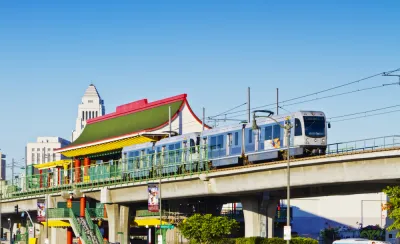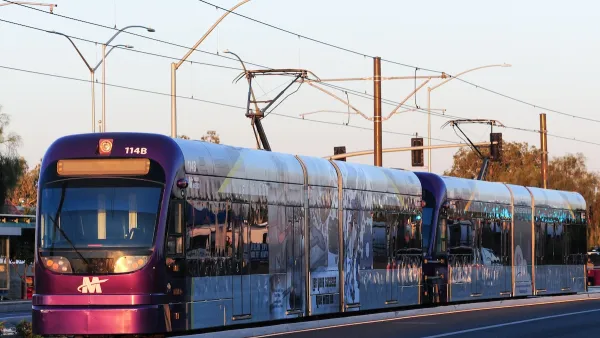Metro's first Quality of Life report measures the impact of the agency's transit investments since 2008.

In 2008, L.A. County voters approved a half-cent sales tax that funded a host of transit projects, including this year's extensions of the Expo and Gold Lines.
Now Metro has released a report measuring the impact of those transit investments on life in Los Angeles.
It shows that more than 22 percent of the county now lives near rail, a rapid bus line, or commuter rail.
It also shows that since passing the measure, Metro has received significantly more money from state and federal grants—up from $112.9 million in 2008 to $522.9 million in 2014. That's in addition to the $3.9 billion generated directly in sales tax revenues (up to 2014).
"The lesson: having local money is the key to getting state and federal money," writes Metro's blog editor Steve Hymon.
Metro is preparing to place an extension of the sales tax, which expires in 2039, on the November ballot, along with a successor that would raise the tax by an additional half-cent.
The report will be expanded this year, and Metro will issue Quality of Life updates every two years going forward.
FULL STORY: Metro releases its first ‘Quality of Life’ report

National Parks Layoffs Will Cause Communities to Lose Billions
Thousands of essential park workers were laid off this week, just before the busy spring break season.

Retro-silient?: America’s First “Eco-burb,” The Woodlands Turns 50
A master-planned community north of Houston offers lessons on green infrastructure and resilient design, but falls short of its founder’s lofty affordability and walkability goals.

Delivering for America Plan Will Downgrade Mail Service in at Least 49.5 Percent of Zip Codes
Republican and Democrat lawmakers criticize the plan for its disproportionate negative impact on rural communities.

Test News Post 1
This is a summary

Test News Headline 46
Test for the image on the front page.

Balancing Bombs and Butterflies: How the National Guard Protects a Rare Species
The National Guard at Fort Indiantown Gap uses GIS technology and land management strategies to balance military training with conservation efforts, ensuring the survival of the rare eastern regal fritillary butterfly.
Urban Design for Planners 1: Software Tools
This six-course series explores essential urban design concepts using open source software and equips planners with the tools they need to participate fully in the urban design process.
Planning for Universal Design
Learn the tools for implementing Universal Design in planning regulations.
EMC Planning Group, Inc.
Planetizen
Planetizen
Mpact (formerly Rail~Volution)
Great Falls Development Authority, Inc.
HUDs Office of Policy Development and Research
NYU Wagner Graduate School of Public Service




























